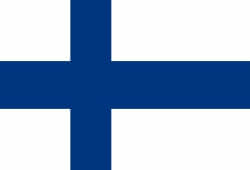Raatteen Maraton - Raate war history
Marathon route full of history
Raatteen Maraton route is central part of Finnish history. The battles that were central to the preservation of Finland’s independence were fought there.
Raate war history
Raate at the centre of Winter war solutions
The decisive battles of the Winter War (30.11.1939 – 13.3.1940) in Suomussalmi took place 30.11.1939 – 10.1.1940. After this, there were a few small skirmishes along the border, the most significant of which was the Red Army’s anniversary attack on Raate on 21–23.2.1940. The war zone included almost the entire eastern part of Suomussalmi, mainly the Juntusranta-Kiannanniemi-kirkonkylä-Raate roads.
When the fighting north of the village had turned in favour of the Finns, Siilasvuo concentrated all his forces on the Raate road, which was under Soviet control from Kuomanjoki to Likoharju. Most of the Soviet troops were in the terrain of Haukila.
Siilasvuo’s plan was simple and clear-cut: the Soviet troops’ connections across the border had to be cut off, the troops had to be cut into pieces and the resulting motels had to be destroyed. To implement the plan, a road was opened on the ice of Lake Alanteenjärvi – Lake Vuokkijärvi, which was used to concentrate troops and maintain them.
The offensive of Siilasvuo’s troops began at the beginning of 1940. The focus of the attack was directed to Haukila, which was attacked from both the south and north. The Raate road was cut off east of Haukila. At the same time, the Soviet troops southeast of Haukila in Sanginlampi and Eskola in the direction of the Kuhmo road were destroyed. The Soviet troops, who had remained passive in their positions, were about to be blockaded in the areas of Haukala, Karila, Tyynelä and Mattila.
The settlement battles in Raate began on 5.1.1940. Near the border, the Finns attacked the road in the terrain of the Raate guard with about a company and west of it with about a battalion to Likoharju, which was captured after several attempts.
Purasjoki bridge destroyed the next day. At the same time, the warriors of Siilasvuo also attacked the isthmus of Kokkojärvi and Teerinen. All these battles accelerated the settlement that took place in Haukila when the Soviet troops were destroyed by the Finnish attack.
The three regiments of the 44th Division were confined to a very narrow area. When the road further east was cut off, the Soviets were practically at a standstill. The only weaker direction was the direction of Puras, but even that was blocked. The fierce extermination battles of the Haukila mott, as well as the mottes of the entire Raate direction, took place between 5 and 7.1.1940.
All that remained was to clean up the area, and by the evening of 10.1.1940 the fighting in Suomussalmi had ended. The breakthrough of the Soviet troops to the West had failed.
After this, there were only patrols and skirmishes in Suomussalmi, the largest of which was the attack carried out by Soviet troops with three battalions on the anniversary of the Red Army on 21–23.2.1940 in Raate. Most of Siilasvuo’s troops were transferred to the Kuhmo front and Ladoga Karelia, where they faced very fierce battles.
Peace came into force on 13.3.1940 at 11.00 a.m. The course of the border in Suomussalmi remained unchanged. The losses on both sides were considerable: the Soviet divisions lost about 23,000 men killed, and the Finns about 800 men.


